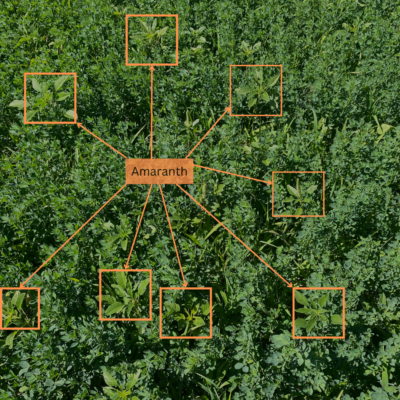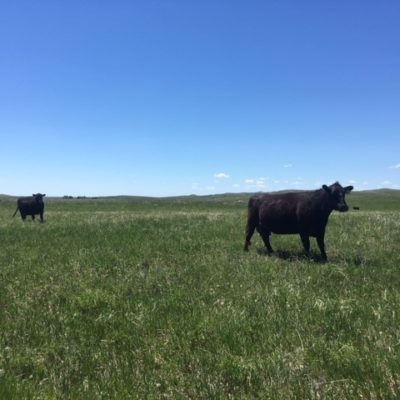Few livestock producers are testing minerals in forages. However, the most common issue we consult on is typically a mineral issue. Proper mineral nutrition ensures healthy animals. Additionally, proper mineral nutrition ensures animals can perform to their peak genetic potential. This often includes but is not limited to reproductive performance. Mineral issues result in lost income through poor animal health and production. Testing forages for mineral concentrations then determining a mineral supplementation program built around those forages can ensure animal health, productivity and optimize financial outcomes.
Mineral concentrations in forages relative to lactating beef cow requirements
In 2021, we partnered with extension educators at the University of Nebraska and University of South Dakota to investigate forages with mineral analysis submitted to Ward Laboratories, Inc from 2012-2019. We compared samples with the nutrient requirements of a lactating beef cow according to the National Research Council (NRC) Nutrient Requirements of Beef Cattle 2016.
As shown in Table 1, we found that micromineral deficiencies were more likely to occur in low protein, poor quality forages as opposed to high protein quality forages such as alfalfa. Further, the two most commonly deficient nutrients were zinc and copper.
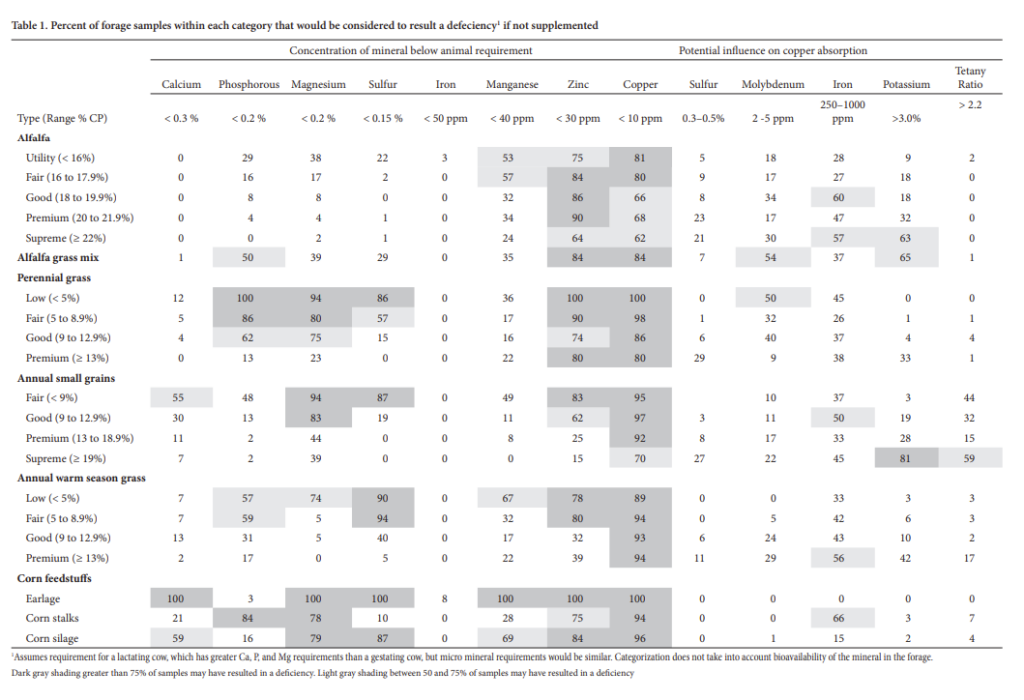
We concluded that trace mineral supplementation was required regardless of forage type or quality. However, building a micromineral supplementation program based on forage analysis results would be the best way to ensure that cattle are receiving the micronutrients they require to support reproductive and production performance. These findings apply beyond beef cattle and other species with similar nutrient requirements such as sheep, goats, and horses.
Variability of minerals in forages
While producers can take the general finding from the study mentioned above, mineral content in forages can be quite variable. Therefore, it is advisable to analyze your own forages to determine the best mineral supplement or create a custom program. One example of this variability is magnesium in the same forages from the study above.
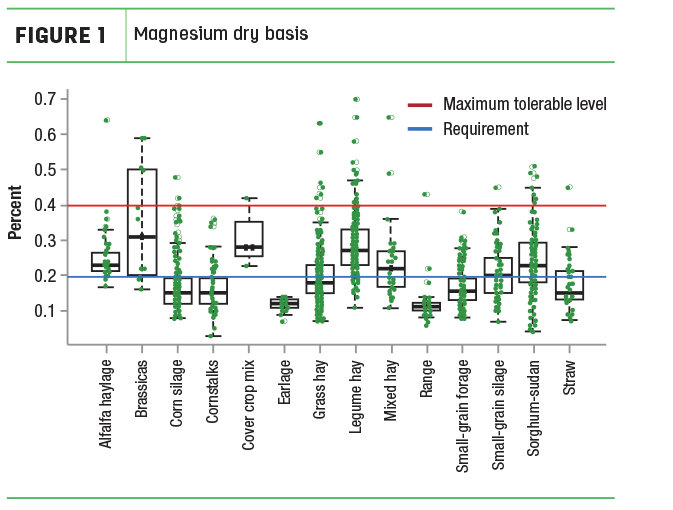
Figure 1 shows that not only are some samples within the same forage variety below animal requirements, but some are also actually above the maximum tolerable level for beef cattle. Therefore, it is key to understand the precise level of magnesium in the forage before adding it to the diet in a supplement.
Other minerals show similar variability to magnesium. So, it is advisable to test minerals in forages to make supplementation decisions.
NIR v. Wet Chemistry
Our laboratory uses the most robust, reliable and repeatable NIRS calibrations commercially available. As NIRS Forage and Feed Testing Consortium (NIRSC) members, we are confident in the accuracy of forage analysis values including protein, ADF, aNDF, Fat etc. However, we have found that the mineral analysis of samples submitted to our lab ran by NIRS compared with our wet chemistry method, inductively coupled plasma – optical emission spectrometry (ICP-OES), do not live up to our high standards for quality data.
Figure 2 shows calcium, phosphorus, potassium, and magnesium with NIRSC determined values on the y-axis and wet chemistry values on the x-axis. The orange diagonal like is a perfect 1:1. If these values perfectly aligned then the sample should all fall on that line. However, you can see the correlation between wet chemistry values and NIRSC values is poor at best.
Figure 2
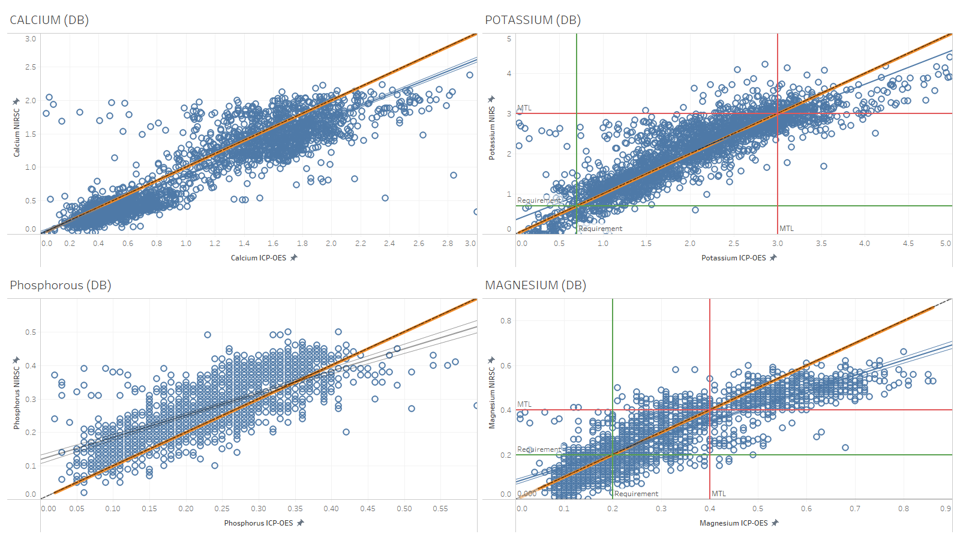
More concerning, if we zoom in on magnesium as an example in Figure 3, inaccurate predicted values may result in the wrong supplementation decision. The green circle on the left shows the NIRSC value determined no supplementation would be necessary when in fact these samples were determined to be deficient in magnesium by wet chemistry methods. The green circle on the right of the figure shows samples which are greater than the MTL threshold, yet the NIRSC determined value shows them as being sufficient to meet nutrient requirements.
Figure 3
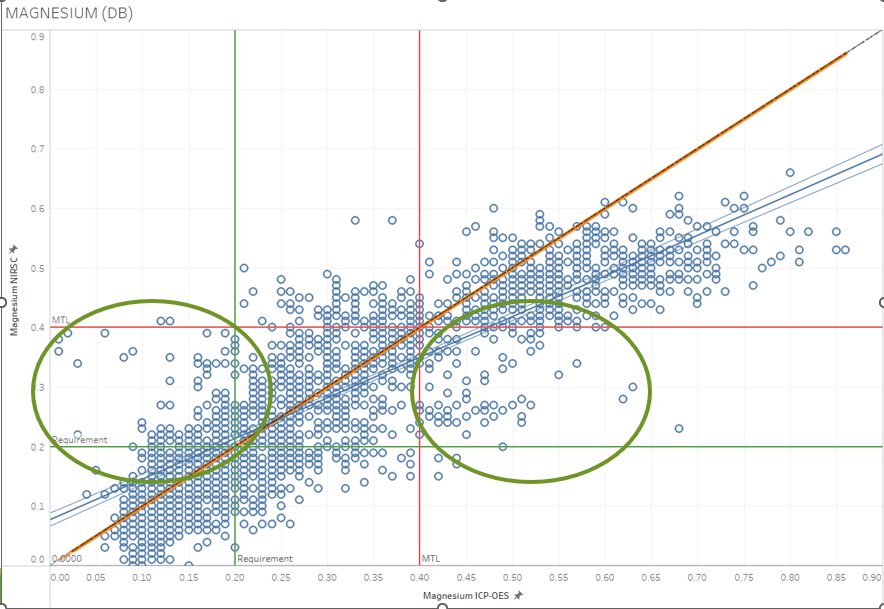
So, to ensure accurate reliable data so producers can make the best possible decisions, our laboratory has opted to only offer mineral analysis by wet chemistry method ICP-OES.
Forage reports with interpretation
As many of our customers may know we have recently switched to a new Laboratory Information Management System (LIMS). This new system has allowed us to add mineral interpretation to our forage analysis. If the customer provides the livestock species to be fed and physiological state, our new report will show mineral concentrations relative to NRC nutrient requirements. Figure 4 shows an example from a grass hay compared to lactating beef cow requirements. From this report you can gather that phosphorus, sodium, copper, and zinc will require supplementation. Further, high iron and molybdenum have the potential to interfere with copper absorption, so the producer should double down on copper supplementation and choose a higher bioavailable source.
Figure 4 Forage mineral report with sufficiency levels relative to NRC guidelines.

While these recommendations relative to mineral sufficiency levels do not replace nutrition consulting or veterinary work, we hope it can help guide producers in the right direction and better understand their forage analysis. As always, our Professional Animal Scientist is still available to field questions regarding the interpretation of your feed and forage testing reports. Mineral sufficiency recommendations are available for beef cattle, dairy cattle, horses, sheep, and goats on forage reports. Ration sufficiency levels are available for the previously listed species and swine and poultry.


